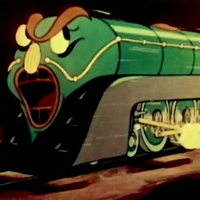Dangerous Oil-by-Rail Is Here, but Railroad Bridge Inspectors Are Not

The California Public Utilities Commission (CPUC) estimates there are about 5,000 railroad bridges in California, but doesn’t really know for sure. They are privately owned and inspected and were off the public radar until oil companies started shipping dangerous crude by rail to California refineries in increasingly large quantities.
Governments are not ready to have volatile loads of cargo rolling through sensitive habitats across the state, much less through heavily-populated metropolitan areas. But help is on the way. In March, the CPUC requested funding (pdf) for seven inspectors to specifically handle oil-by-rail, and two of them would focus on bridges.
The Contra Costa Times reported last week that the two inspectors have not yet been hired, but when they are, they will be the only two inspectors checking out the bridges. They will be assisted in their task by the sole federal inspector assigned to the area―an area that includes 11 states.
One of their first jobs will be to find the bridges. There is no comprehensive list. Judging by some industry comments, there may be some reluctance on the part of rail owners to provide all the information the government might ask. Bridge consultant and former American Society of Civil Engineers President Andy Hermann told the Times that the companies kept bridge data secret for competitive reasons.
But not to worry. The owners already do a good job of maintaining the bridges because, in Hermann’s words, “There's a very strong profit motive to keep the bridges open. Detours will cost them a fortune.” In other words, this would be a situation where a company does not make a risky decision based on short-term, bottom-line considerations that could adversely affect the well-being of people and the environment.
In a report (pdf) to lawmakers on rail safety last December, the CPUC called California’s rail bridges “a potential significant safety risk.” It said most of them “are old steel and timber structures, some over a hundred years old.” Big rail companies tout their safety programs but the report points out often these bridges are owned by small short line railroads “that may not be willing or able to acquire the amount of capital needed to repair or replace degrading bridges.”
That’s bad, but not AS bad when the rail shipments aren’t volatile oil fracked from North Dakota’s Bakken formation, loaded on old rail cars ill-equipped to handle their modern cargo. Federal regulations to upgrade the unsafe cars will probably take at least a few years to complete.
When safety advocates talk about the dangers of crude-by-rail, they invariably cite the derailment last July in Quebec that killed 47 people, burned down 50 buildings and unleashed a “river of burning oil” through sewers and basements. But the Times reached back to 1991 for arguably California’s worst train derailment, albeit sans crude oil.
A train in Dunsmuir, Siskiyou County, fell off a bridge and dumped 19,000 gallons of a concentrated herbicide into the Sacramento River. Fish and vegetation died 45 miles away. Some invertebrate species went extinct. Hundreds of people required medical treatment from exposure to the contamination.
Railroads are carrying 25 times more crude oil nationally than they were five years ago. Most oil in California is moved via pipeline or ship. In 2012, only 0.2% of the 598 million barrels of oil arrived by rail in California. But the California Energy Commission (CEC) has said it expects rail to account for a quarter of imports by 2016.
Earthjustice, an environmental advocacy group, does not want safety measures to amble down the track years after the crude roars through. Its lawyers joined with the Sierra Club and ForestEthics to file a lawsuit in federal court last week to force a U.S. Department of Transportation (DOT) response to a July legal petition seeking a ban on the type of rail cars that derailed and exploded in Quebec.
A week ago, a San Francisco County Superior Court judge told Earthjustice and other environmental groups they couldn’t sue to halt deliveries of crude oil to a rail terminal in Richmond because the deliveries had been legally permitted by the state―without public notification―and the 180-day deadline to appeal had quietly passed.
–Ken Broder
To Learn More:
Crude-By-Rail: One Federal Inspector Oversees All California's Railroad Bridges, No State Oversight (by Matthias Gafni, Contra Costa Times)
Environmental Groups Sue Government over Use of Dangerous Rail Cars for Shipping Oil (by Katie Valentine, ThinkProgress)
Environmentalists Sue Over Crude-by-Rail Safety (by Molly Samuel, KQED)
California Has Little Say over Oil Train Safety (by Molly Samuel, KQED)
Oil by Rail Safety in California (California Office of Emergency Services)
Budget Change Proposal (California Public Utilities Commission) (pdf)
Annual Rail Activity Safety Report to the California State Legislature (California Public Utilities Commission) (pdf)
- Top Stories
- Controversies
- Where is the Money Going?
- California and the Nation
- Appointments and Resignations
- Unusual News
- Latest News
- California Forbids U.S. Immigration Agents from Pretending to be Police
- California Lawmakers Urged to Strip “Self-Dealing” Tax Board of Its Duties
- Big Oil’s Grip on California
- Santa Cruz Police See Homeland Security Betrayal in Use of Gang Roundup as Cover for Immigration Raid
- Oil Companies Face Deadline to Stop Polluting California Groundwater




